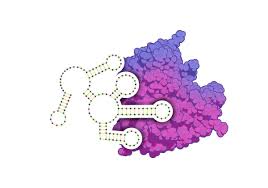Trigeminal neuralgia (TN) is a chronic pain condition that affects the trigeminal or 5th cranial nerve. The trigeminal nerve is responsible for sensation in the face. It branches out into three divisions – the ophthalmic, maxillary, and mandibular nerves.
TN causes severe, sporadic facial pain that usually feels like a clicking or electric shock in specific areas like the cheek, lips, nose, eyes or jaw. Episodes of pain can last from a few seconds to several minutes at a time and may come uncontrollably dozens of times per day. The pain can be triggered by activities like chewing, brushing teeth, talking or tactile stimuli like a light touch on the face.
Causes and Risk Factors of Trigeminal Neuralgia
The exact cause of trigeminal neuralgia is not fully understood. However, it is often caused due to vascular compression, where a blood vessel compresses or indirectly irritates the trigeminal nerve as it exits the brainstem. Other potential causes include demyelination of the nerve fibers or defects in the myelin sheath that protects the nerve.
Some key risk factors for developing TN include older age (over 50 years), female gender and multiple sclerosis. Rarely, tumors in the cerebellopontine angle region can also cause TN-like facial pain. People with a family history of TN may also have a slightly higher risk.
Medical and Drug Trigeminal Neuralgia Treatment Options
There are several medications available to provide relief from TN symptoms:
– Carbamazepine (Tegretol) is usually the first-line drug therapy prescribed. It acts by reducing nerve impulse transmission along the trigeminal nerve.
– Oxcarbazepine (Trileptal) is an alternative to carbamazepine for patients who cannot tolerate the side effects. It has a better safety and tolerability profile.
– Baclofen (Lioresal) acts on gamma-aminobutyric acid receptors in the trigeminal nerve pathway to reduce pain signals.
– Pregabalin (Lyrica) is commonly used along with other anti-seizure medications as it is effective in reducing neuralgic pain.
– Lamotrigine (Lamictal) helps block voltage-gated sodium channels in nerve fibers to manage pain.
– Steroids like prednisone may provide temporary relief when given along with other drugs.
Surgical Trigeminal Neuralgia Treatment Options
For severe cases of TN that do not respond to medicines, the following surgical procedures may be considered:
Microvascular Decompression Surgery
This is the gold standard surgery for TN caused by vascular compression. The surgeon separates or moves the blood vessel compressing the trigeminal nerve root, thus relieving pressure and pain. It has success rates of over 90% for relieving pain.
Glycerol Rhizolysis
During this non-invasive procedure, glycerol is injected near the trigeminal nerve root to dehydrate and compress the nerve fibers. It provides temporary or long-term pain relief in about 60-80% of patients. The effects usually last for 6-18 months.
Balloon Compression
Similar to glycerol rhizolysis, a balloon-tipped catheter is used to gently compress the trigeminal ganglion and reduce neuralgia episodes. It has success rates of 70-90% in controlling TN pain.
Radiofrequency Rhizotomy
As a minimally invasive option, this procedure uses radiofrequency energy to destroy small sections of the trigeminal nerve root ganglion. It can relieve pain in over 80% of patients for several years.
Gamma Knife Radiosurgery
This non-invasive option delivers high doses of radiation to lesion or compressing blood vessel near the trigeminal nerve root ganglion. It provides pain relief in approximately 85% of patients with few side effects.
Complementary Treatments
For mild to moderate TN or as an adjuvant, integrative therapies may help relieve symptoms:
– Acupuncture aims to restore the flow of qi or life energy along meridians and reduce pain.
– Relaxation techniques like yoga, meditation and deep breathing can counter stress which aggravates pain.
– Physical therapy focuses on exercises to improve facial mobility and reduce chronic muscle tension.
– Botox injection in trigger points can block transmission of pain signals from nerve endings.
– Diet plays a role as excess caffeine, processed foods and artificial sweeteners may worsen pain.
Various medical, surgical and complementary therapies exist to effectively manage the pain and symptoms of trigeminal neuralgia when used individually or in combination based on severity of each case.
*Note:
1. Source: Coherent Market Insights, Public sources, Desk research
2. We have leveraged AI tools to mine information and compile it.



